The oceangoing traders and pirates who raided and occupied different parts of northwestern Europe between the 8th to 11th centuries are known as Vikings. During this period of Scandinavian expansion, the Vikings came from Norway, Sweden, and Denmark. Appearing like traders they raided, occupied, and settled in Russia, France, Iceland, Netherlands, Finland, England, and Greenland. Scandinavia was rich in iron, and it was due to the iron tools that they could clear forests and plough their lands far more easily and efficiently, and consequently they had better crop yields and were more prosperous. Their population increased notably, and the need arose for extra land and resources. It was in this perspective that they utilized their superior long ships to attack swiftly and grab parts of land from different locations. United and organized as they were among themselves, they administered their skills in developing new settlements.
1. Harald Gormsson
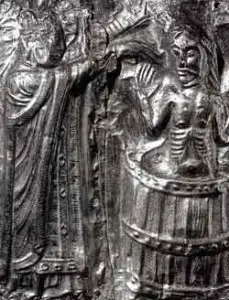
Harald Gormsson, also known as Bluetooth, was born to King Gorm the Old and Thyra Dannebod in c.935 and died in 986. He ruled as the King of Norway from 958 to 970. In 960, Harald was converted to Christianity, and he reburied his father’s body in the church situated in the vicinity of the original burial site, a mound. He fixed a huge Jelling Stone with the typical runic inscription reading ‘King Harald ordered this monument made in memory of Gorm, his father, and in memory of Thyrvé, his mother; that Harald who won for himself all of Denmark and Norway and made the Danes Christian.’ In addition to the erection of the runic Jelling Stones, Harald also constructed five ring forts of strategic importance. The forts were named and situated at: Trelleborgon Sjaelland, Nonnebakken on Fyn, Fyrkat in Jylland, Aggersborg near Limford, and Trelleborg in Scania.
2. Leif Eriksson
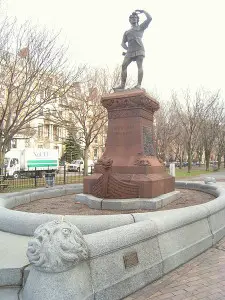
Leif Eriksson was born to Erik the Red and Thiodhild in 970 and died in 1020. He was brought up in Eastern Settlement of Brattahlid. He was a pronounced an outlaw from Iceland and founded Vinland. He had two sons, Thorgils and Thorkell, from his wife Thorgunna. The latter was made the Viking Chief of the Greenland settlement after the death of Eriksson. He is considered to have discovered America contrary to the common belief that it was discovered by Columbus. Many years before Columbus, Eriksson discovered America. But, unlike Columbus, he did not settle there, and this is why Columbus is more popular in America and the rest of the world. Leif Eriksson was the most famous Viking and known as founder of Newfoundland. His image appears on a commemorative U.S. postage stamp.
3. Amerigo Vespucci

Amerigo Vespucci was born to Ser Nastagio and Lisabetta Mini, in Florence, Italy on March 9, 1454 and died in Seville, Spain on February 22, 1512. He was the first person to contradict the findings of Columbus that Brazil and the West Indies belonged to Asia. He is also believed to have financed the expedition of Columbus. He is popularly known for the myth that the name of America was derived from Amerigo, his first name. A school of thought differs on account of his landing on American soil five years after Columbus, and it is believed that the name was after the star Le Merica which was more known to the navigators. Accepting the invitation of King Mauel I of Portugal, he joined many voyages conducted to explore the East coast of South America. Martin Waldseemuller, in the map drawn by him, named the new continent America after his first name, Amerigo.
4. Ivar Ragnarsson
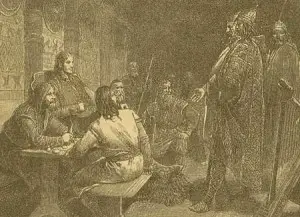
Ivar Ragnarsson, nicknamed Ivar the Boneless, was son of Regnar Lodbrog, the famous Danish King. He was a famous Viking and was reputed as a Berserk, a warrior who fights in an uncontrollable state of fury as if in a trance, and the English word ‘berserk’ has been derived from this uncontrollable wild state of anger. He ruled a part of modern Denmark and Sweden. In AD 865 he, along with his brothers, formed the Great Heathen Army and conquered East Anglian, part of England and York. Ivar is also known for killing St. Edmund of East Anglia. About his nickname, some consider it was due to his cartilage-like bones of his legs due to a disease resembling osteoporosis, while there are others who think it was in appreciation of his extraordinary flexibility and agility. Ivar has been portrayed differently in different documentaries and movies including: The Vikings, Erik the Viking, The Sea of Trolls, and The Last Kingdom.
5. Erik the Red
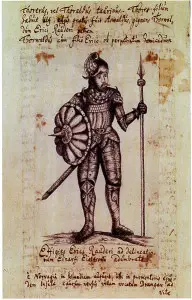
Erik Thorvaldsson, better known as Erik the Red, probably on account of his red hair, was born in Jaren, Rogaland, Norway in 950 and died in 1003. He founded the Norse settlement in Iceland. The famous Viking explorer of Iceland, Leif Erikson was his son. His father was exiled from Norway for manslaughter, and Erik the Red too was similarly exiled from Iceland on murder charges. Seafaring in or around 981, he discovered Greenland and later on settled there with a fleet of 25 ships. His wife built a Church in Brattahlid which was found by the Danish archaeologists in 1962.
6. Cnut the Great
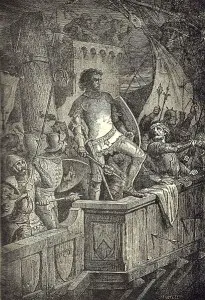
Cnut the Great, also known as Canute, was born to Sweyn Forkbeard and Swietoslawa in 985 and died on November 12, 1035. He was the king of Denmark, England, Norway, and parts of Sweden. He won the throne of England in the beginning of the Viking era in 1016, and he won the Danish throne in 1018. He united the English and Danish thrones not by brutality but by developing cultural harmony and a collective power base. After conquering Norway and Sweden in 1026, he wrote a letter declaring himself as ‘king of all England and Denmark and the Norwegians and of some of the Swedes.’
7. Sigmundur Brestisson
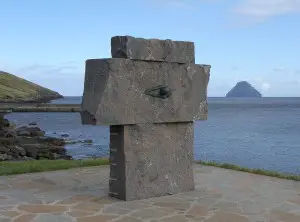
Sigmundur Brestisson was born in 961 and died in 1005. He is one of the most famous Vikings and is best known for introducing Christianity to the Faroe Islands in 999. He is the main character of the Faereyinga Saga which is the story of the conversion of the Faroes into Christians and the merger of the Faroe Islands with the Kingdom of Norway. Sigmund started with inculcating Christianity in the Faroes but faced great resistance at the hands of angry mobs whereupon he changed his strategy, and the warrior Viking raided the residence of Chief Trondur I Getu and offered him to accept Christianity or to get ready for beheading. The chief chose the former option.
8. Rollo of Normandy
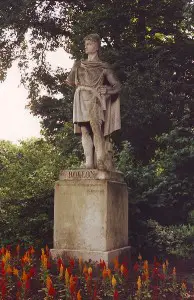
Rollo of Normandy, sometimes also known as Robert I, was the founder and first ruler of the Viking-occupied region known as Normandy. His descendants were known as Dukes of Normandy and later as Kings of England. Along with Sigfred, he besieged Paris in 885. In 911 he attacked Paris but failed. Although Rollo was converted to Christianity, yet he went mad near his death and beheaded 100 Christian prisoners to honor the gods he had worshipped before his conversion to Christianity. He later donated a hundred pounds of gold to the church in honor of the Christian God whom he had accepted as the true God.
9. Ragnar Lodbrok
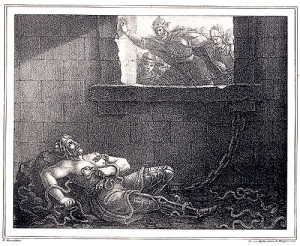
Ragnar Lodbrok was a legendary hero and one of the most famous Vikings of his age. He was a dreaded terrorist for France and England. He was always after big adventures and proclaimed that he did so lest his adoptive sons Bjorn Ironside and Ivar the Boneless excelled and tarnished his figure. He used the rivers as highways and using his long ships attacked France many times. He was always on the move and was unpredictable for his enemies. He fought many times with the Danish forces but ran out of luck in Britain.
10. Harald Sigurdsson
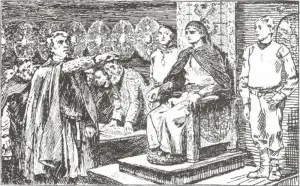
Harald Sigurdsson was born in 1015 and died on September 25, 1066. He was nicknamed ‘Hardrada,’ literally meaning ‘Hard Ruler’ on account of his ruling style. He was king of Norway from 1046 to 1066. He also claimed the Danish and English thrones. At the age of 15 years in 1030, he fought in the Battle of Stiklestad but was defeated and was constrained to exile in Kievan Rus where he joined the army of Grand Prince Yarsolav the Wise and rose starting from the rank of captain to the rank of commander of the Byzantine Varangian Gaurd in a short time.
Conclusion:
Raid rather than trade is the first word that comes to mind on hearing about the Vikings. As a matter of fact, all the raiders, traders, conquerors, adventurers, explorers, tourists, and many others are basically travelers. Difficulties in traveling are definitely to arise, and the benefits of traveling too are undeniable. Vikings faced difficulties in their seafaring, raiding, and occupying activities, but they also developed new settlements. The image of Vikings is generally barbaric, but there were the Vikings who are famous for their nobility and chivalry.










May 8, 2020 6:41 am
his real name was Harald Gormsson